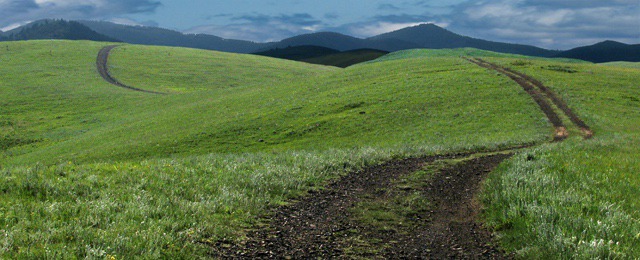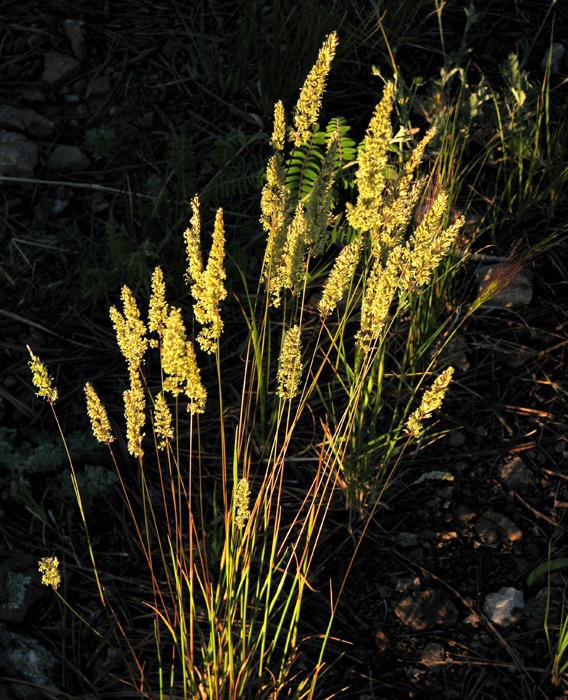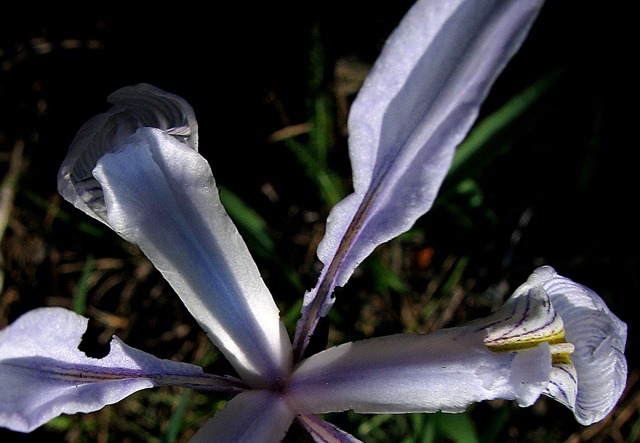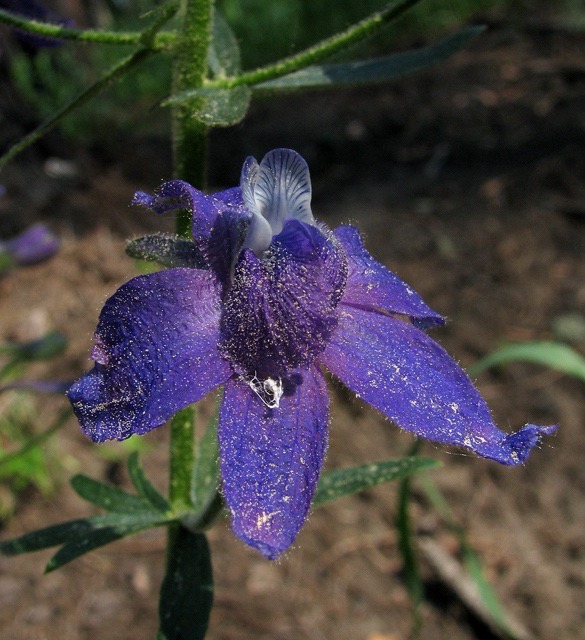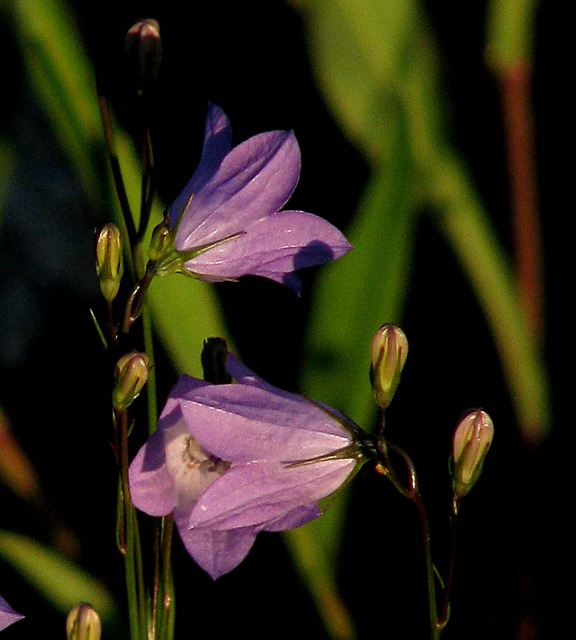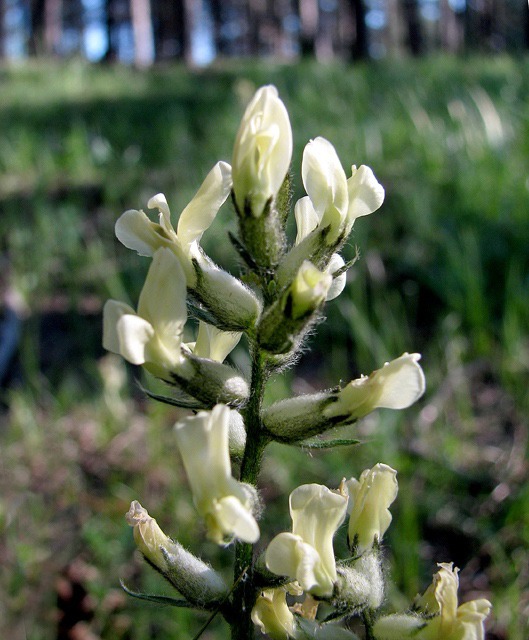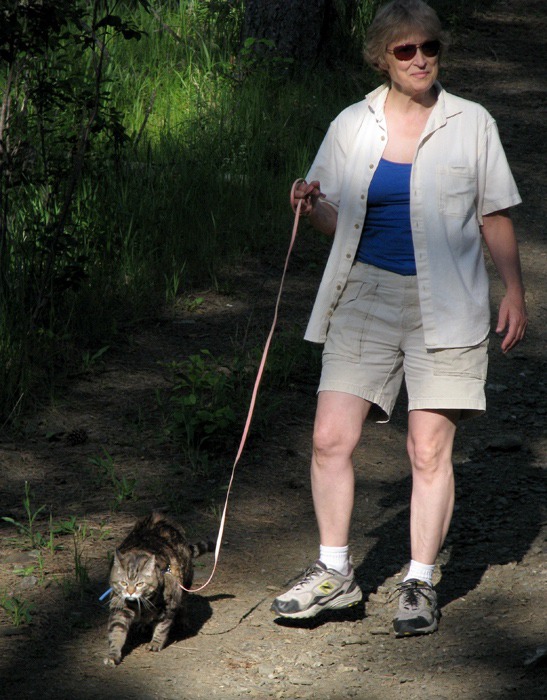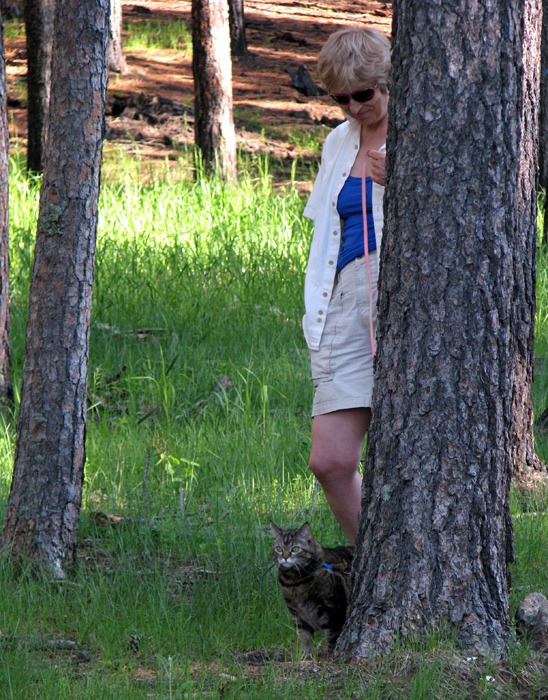Bald Hills Backroad: We love the back roads in the Black Hills! This one winds around in the Bald Hills, north of Sheridan Lake. The South Dakota Centennial Trail traverses these grassy hills and long draws; it's an easy place to get lost if you don't keep a sharp eye out for trail markers. It's also perfect for mountain biking.
Summer Sun Wildflowers: So on this summer day, we enjoyed the sweeping panoramas and wildflowers and a cat hike.
Summer Sun Wildflowers: So on this summer day, we enjoyed the sweeping panoramas and wildflowers and a cat hike.
The little pincushion cactus (Coryphantha missouriensis) below is only six inches across and four inches high -- easy to miss in the grass. It's common in foothill prairies, especially in dry, rocky habitats.
June grass (Koeleria macrantha) is a cool season grass -- that means it grows early in the season and flowers in May and June and then goes dormant in the heat of summer. This beautiful grass doesn't grow in the heavy wet clay of Rapid City yards, but thrives on dry hillsides like the Bald Hills.
Shell-leaf penstemon (Penstemon grandiflorus) is the largest native penstemon in the Black Hills. It's one of a lovely, hardy family of pink, blue, purple, and red snapdragon-like flowering plants. This one self-seeds and will spread as much as you allow in your native plant garden.
Summer Shade Wildflowers: The wildflowers that grow at the forest's edge tolerate some shade. A close-up photo shows the intricate patterns on wild iris petals.
Larkspur is very common in the Hills in mixed grass prairies, meadows, open forest and woodlands, and a variety of other habitats. It does well in the garden but doesn't really like heavy clay soil. The plant is poisonous to animals and people.
Harebells are another very common wildflower in the Black Hills. This beauty readily adapts to the garden and will spread as much as you allow.
Northern bedstraw is at home throughout the Black Hills. The clumps of white flowers grace the grasslands in early spring.
Milkvetch blooms in spring and is a legume. Legumes fix nitrogen in the soil and are thus very important for soil health.
Cat Hiking: Leesha was along on this expedition so she had to go for a hike. On the edge of the ponderosa forest, she commenced exploring. Her face gets so fierce when she hikes, like a bobcat! A young man unexpectedly wandered out of the forest, all dressed in his Goth finery; I don't know who was more surprised -- Leesha or the teenager who certainly didn't expect to find two ancient (to him, anyway) explorers with a cat way out in the woods!
Cat Hiking: Leesha was along on this expedition so she had to go for a hike. On the edge of the ponderosa forest, she commenced exploring. Her face gets so fierce when she hikes, like a bobcat! A young man unexpectedly wandered out of the forest, all dressed in his Goth finery; I don't know who was more surprised -- Leesha or the teenager who certainly didn't expect to find two ancient (to him, anyway) explorers with a cat way out in the woods!
Louise with photos by Brian text and photos copyright GoinMobyle, LLC, 2008


